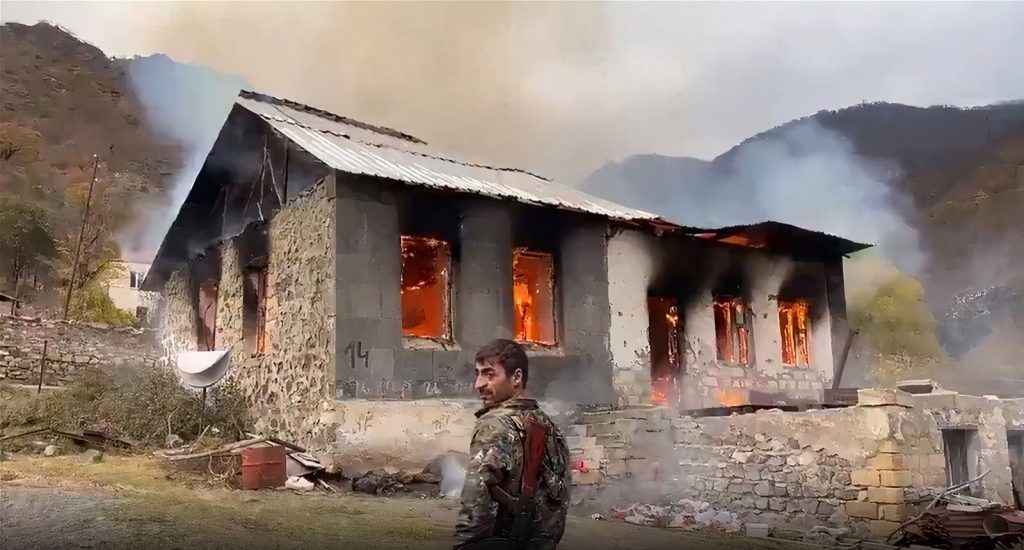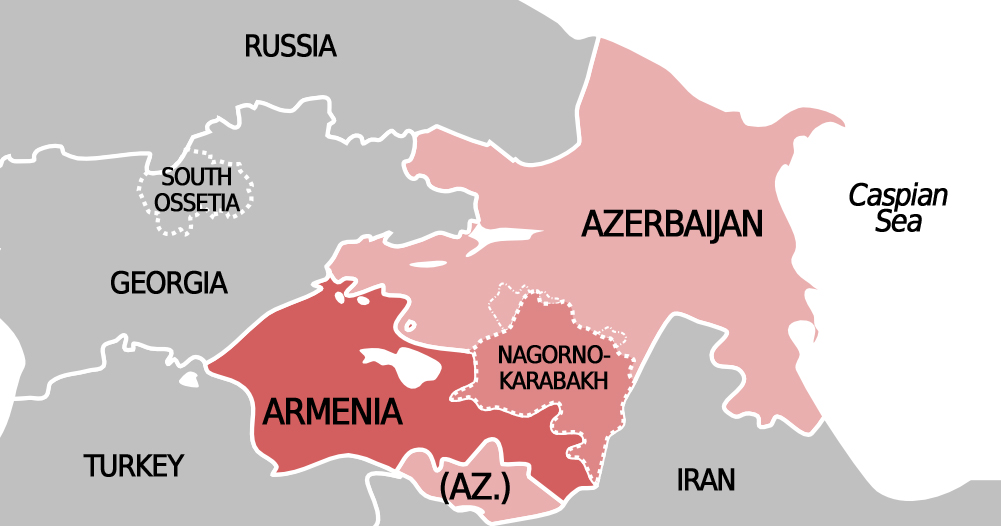Many residents have adopted a scorched earth policy in Nagorno-Karabakh region by setting their houses on fire before leaving to other parts in Armenia before the deadline that will see parts of the territory handed over to Azerbaijan as part of the peace agreement.

Armenia and Azerbaijan are set to end hostilities after they agreed to a Russia-brokered peace deal earlier this month. The Nagorno-Karabakh ceasefire agreement between Armenia and Azerbaijan brokered by Russia stipulates swap of territory, an exchange of prisoners of war and bodies, the return of refugees to the region and restoring economic and transport ties. The current peace deal mandates the return of Kalbajar and Aghdam districts to Azerbaijan by Armenia within November 20. Similarly, the Lachin district, held by Armenia since the 1990s, is to be returned by December 1, 2020.
As per the agreement, Azeri and Armenian armed forces will stay in positions they currently occupy. A Russian peacekeeping contingent is deployed along the line of contact in Nagorno-Karabakh and along the corridor that connects the disputed region to Armenia. Russia is sending almost 2,000 peacekeepers to the disputed region of Nagorno-Karabakh aboard military transport jets. “A Russian peacekeeping contingent, consisting of 1,960 servicemen, 90 armored carriers and 380 units of vehicle and special hardware, is deployed to oversee the ceasefire and end hostilities in the conflict zone,” the Russian Defense Ministry said in a statement.
Though the world sees the deal as the end of hostilities, the residents of Kalbajar tasked with leaving their homes see the deal as a beginning of another struggle. The ethnic Armenians living in this region, who are mostly Christians, were given a weekend’s deadline to leave, following the peace deal. Azerbaijan is set to take control of the region on 15th November before which the residents were asked to leave to other regions in Armenia.
As per a report in the Guardian, at least 6 houses were set on fire in the Kalbajar village of Charektar by ethnic Armenians on Saturday while more 10 houses were razed on Sunday. “This is my house, I can’t leave it to the Turks…Everybody is going to burn down their house today … we were given until midnight to leave. We also moved our parents’ graves, the Azerbaijanis will take great pleasure in desecrating our graves. It’s unbearable,” said an ethnic Armenian, forced to leave the Nagorno-Karabakh region. He was seen throwing gasoline-soaked rags and burning wooden planks into a house.
Few other Armenians say they are not leaving anything useful for the Azeris. They want the Azeris to build their own houses from scratch. Armenians were carrying everything they could with them and loaded trucks with household items before burning the houses. Most families removed most items from their houses, some even removed the doors and windows and loaded onto the trucks, which they will be able to use in their new houses, before burning the houses.
The Nagorno-Karabakh conflict

The conflict has its origins in the early 20th century, though the present conflict began in 1988, when the Karabakh Armenians demanded that Karabakh be transferred from Soviet Azerbaijan to Soviet Armenia. The conflict escalated into a full-scale war in the early 1990s.
The territorial conflict between Armenia and Azerbaijan over the Nagorno-Karabakh region, inhabited mostly by ethnic Armenians, and seven surrounding districts, inhabited mostly by Azerbaijanis began after their expulsion during the First Nagorno-Karabakh War in the 1980s. These districts which are de facto controlled by the self-declared Republic of Artsakh are internationally recognized as de jure part of Azerbaijan.
A ceasefire signed in 1994 provided for two decades of relative stability, which significantly deteriorated along with Azerbaijan’s increasing frustration with the status quo, at odds with Armenia’s efforts to cement it. A four-day escalation in April 2016 became the deadliest ceasefire violation until the 2020 conflict. An estimated 28,000–38,000 people were killed between 1988 and 1994. Between 1994 and 2009, as many as 3,000 people, mostly soldiers, had been killed. In the 2020 fighting, hundreds were killed, primarily soldiers, but also over a hundred civilians.
Russia is officially neutral and has sought to play the role of a mediator. Turkey is widely considered Azerbaijan’s main supporter in the conflict while Iran is officially neutral and has sought to play the role of a mediator, most notably in 1992.
On March 14, 2008 the United Nations General Assembly adopted a resolution which “reaffirmed Azerbaijan’s territorial integrity, expressing support for that country’s internationally recognized borders and demanding the immediate withdrawal of all Armenian forces from all occupied territories there.” It was adopted by a vote of 39 in favour to 7 against, while most countries either abstained or were absent. It was backed mostly by Muslim states.
The 2020 deal is seen as a major step in the reconciliation between the two warring countries though the animosity between their people is far from resolved.
